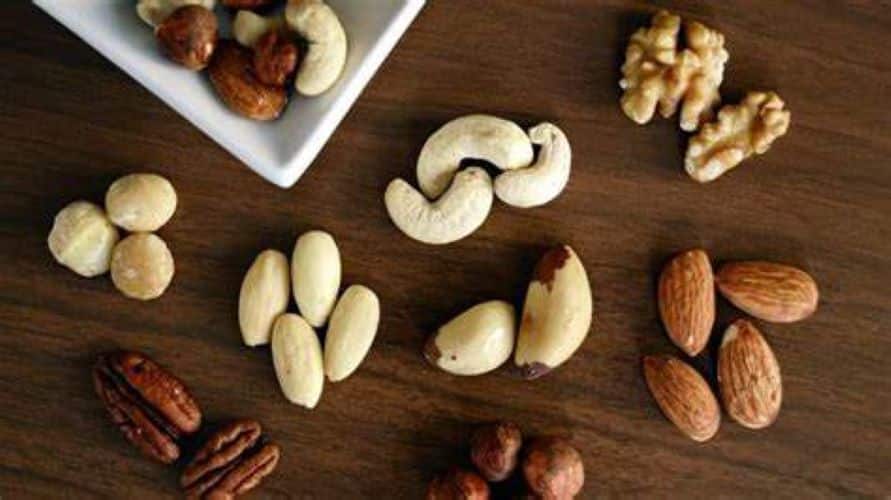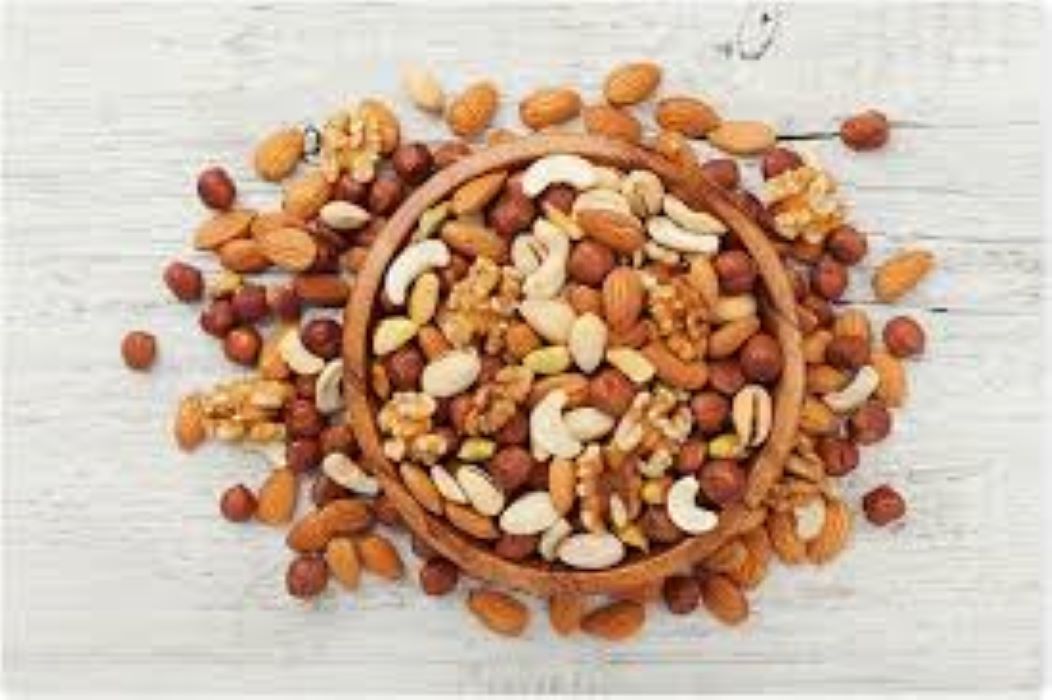Blog
Nuts for Lowering Cholesterol?

Nuts are one of the healthiest foods out there. They’re packed with protein, fiber and healthy fats that help lower cholesterol and fight heart disease. Nuts can also help you feel full longer, which makes them a great snack when you want to avoid overeating or keep hunger at bay between meals. But not all nuts are created equal when it comes to lowering cholesterol levels: You’ll get more benefits by choosing some over others and consuming them in small portions daily or weekly instead of gorging on them once a month as an occasional treat.
Nuts have been shown to lower cholesterol.
Nuts are a good source of healthy fats, protein and fiber. They’re also low in sugar, which makes them an ideal snack for people who are trying to lose weight. Nuts contain many vitamins, minerals and antioxidants that may help protect against heart disease.
In addition to these health benefits, nuts have been shown to lower cholesterol levels in clinical trials (1).
Nuts are also good sources of magnesium, iron and vitamin E. Magnesium helps maintain bone health and prevents high blood pressure. Iron is essential for red blood cells to carry oxygen throughout your body. Vitamin E is an antioxidant that may protect against cell damage caused by free radicals
. Nuts may also help reduce the risk of developing diabetes. In a study published in the American Journal of Clinical Nutrition, researchers found that people who ate nuts every day had a lower risk of developing type 2 diabetes (2). This suggests that eating nuts daily may be beneficial for preventing this disease.
The researchers also found that frequent nut consumption was associated with lower levels of inflammation in the body. Inflammation is a process that causes tissue damage, which can lead to disease.
The researchers pointed out that the results of their study were only observational, so they can’t prove that nuts prevent diabetes. However, they noted that the findings are consistent with other studies on nut consumption and health outcomes. In an editorial that accompanied the study, Dr. Frank Hu and Dr. Meir Stampfer wrote: “The results of this prospective analysis provide further evidence that frequent nut consumption may play a role in reducing risk of type 2 diabetes.”
Raw or roasted? It depends.
Raw nuts are better for your health, but roasted nuts have a longer shelf life and more calories. If you’re going to eat raw or roasted nuts, here’s what you need to know:
- Raw walnuts (1 oz): 160 calories, 15g fat (2g saturated)
- Roasted walnuts (1 oz): 185 calories, 18g fat (3g saturated)
- Raw almonds (1 oz): 160 calories, 14g fat (1.5g trans)
- Roasted almonds (1 oz): 190 calories, 17g fat (2.5g trans)
Roasted peanuts (1 oz): 190 calories, 17g fat (3.5g saturated) Raw peanuts (1 oz): 170 calories, 15g fat (2g trans)
Raw pistachios (1 oz): 170 calories, 15g fat (2.5g trans) Roasted pistachios (1 oz): 210 calories, 21g fat (3.5g saturated)
Raw walnuts (1 oz): 160 calories, 15g fat (2g saturated) Roasted walnuts (1 oz): 185 calories, 18g fat (3g saturated)
Choose unsalted nuts over salted ones.
- Avoid salted nuts.
- Salted nuts are a major source of sodium in our diets, which can lead to high blood pressure, heart disease and stroke. A handful of salted almonds contains about 160 milligrams of sodium–that’s about 10 percent of the daily value for most Americans (about 2,300 mg).
- Choose unsalted nuts over salted ones.
- Unsalted nuts allow you to control how much salt you eat; they also tend to be less expensive than their salted counterparts because they don’t require extra processing steps or additives like sugar or butter that add calories but no nutritional value. If you’re concerned about sodium intake but still want some flavor on hand at all times, try making your own spice mixes that include herbs like rosemary or thyme instead!
Also, when buying nuts, look for those that are unsalted and raw. Roasted almonds have about 50 percent more calories than raw ones because of the additional fat added during the roasting process.
The same goes for peanuts: Roasted peanuts have more calories than raw ones because of the added fat content. If you’re looking for a salty snack, try some roasted nuts with sea salt or smoked paprika instead.
This will cut down on the amount of sodium you’re eating and help keep your blood pressure in check.
Nuts are great for snacking. They have a high protein content and contain many healthy fats that help you feel full longer. But if you’re trying to lose weight or maintain a healthy diet, it’s important to watch the amount of calories that you consume from nuts.
The best way to do this is by measuring out a serving size and eating no more than that amount. For example, one ounce of nuts contains about 160 calories. If you’re looking for a snack that’s high in protein, try eating some hard-boiled eggs (one large egg has 6 grams). Or if you need something salty, grab some cucumbers slices with hummus on top (1/4 cup of hummus has around 80 calories).
Eat a handful or two of nuts every day.
When it comes to nuts, the amount that counts is a handful. It’s generally considered one ounce (about 28g), which is about an average-sized handful.
If you’re not sure how many nuts are in a serving size, check the nutrition facts label on your favorite brands; they should tell you there. If they don’t have any information on their packaging or website, call or email customer service and ask! You may find that some brands contain more fat than others–and some are higher in calories as well. The best way to make sure you’re getting all the benefits without too many negative side effects? Choose those with lower fat content by avoiding those with higher amounts (like cashews) while eating those with lower amounts (like almonds).
You can also eat other kinds of seeds like sunflower seeds instead of just peanuts if they suit your taste buds better! Just make sure none of them add up over 100% of your daily calories because then these foods would no longer fit into an overall healthy diet plan such as this one does…
For instance, if you eat a handful of peanuts every day for lunch, you’ll be consuming about 200 calories from fat alone. That’s too much for most people!
The best way to make sure you’re getting all the benefits without too many negative side effects? Choose those with lower fat content by avoiding those with higher amounts (like cashews) while eating those with lower amounts (like almonds). You can also eat other kinds of seeds like sunflower seeds instead of just peanuts if they suit your taste buds better! Just make sure none of them add up over 100% of your daily calories because then these foods would no longer fit into an overall healthy diet plan such as this one does… For instance, if you eat a handful of peanuts every day for lunch, you’ll be consuming about 200 calories from fat alone. That’s too much for most people!
Buy nuts in the shell, then crack them open at home to avoid added salt and fat.
If you’re concerned about fat and salt, buy nuts in the shell. You can then crack them open at home and measure out exactly how much you want to eat. This is also a great way to save money–nuts in their shells are cheaper than pre-shelled varieties!
When you buy nuts in the shell, it’s important to store them properly. Keep them in an airtight container in a cool place away from sunlight and heat. If you want to keep them fresh for longer, then put them into the freezer.
When you’re ready to eat your nuts, it’s important that you don’t go overboard. The American Heart Association recommends consuming no more than one ounce of nuts per day. This is about 28 grams or two tablespoons—and even then, they should be eaten in moderation due to their high fat content.
If you’re concerned about fat and salt, buy nuts in the shell. You can then crack them open at home and measure out exactly how much you want to eat. This is also a great way to save money–nuts in their shells are cheaper than pre-shelled varieties! When you buy nuts in the shell, it’s important to store them properly. Keep them in an airtight container in a cool place away from sunlight and heat. If you want to keep them fresh for longer, then put them into the freezer.
Nuts can be part of a healthy diet if you’re careful about how much you eat and what kinds you choose.
Nuts can be part of a healthy diet if you’re careful about how much you eat and what kinds you choose.
Nuts are high in fat, so eat them in moderation. Nuts also have a lot of calories, even though they’re mostly from fat. And some varieties contain sodium as well as other minerals such as calcium, magnesium and potassium–but don’t go overboard! If you’re watching your weight or blood pressure levels (or both), don’t overdo it with nuts because they may not be good for everyone under all circumstances.
However, nuts do provide protein and fiber along with monounsaturated fats that help reduce cholesterol levels by lowering LDL (“bad”) cholesterol while raising HDL (“good”) cholesterol levels.*
Nuts can be a healthy part of your diet if you eat them in moderation and choose the right types. The fat content in nuts may contribute to weight gain, so don’t gorge on them. As with any food, it’s important to keep an eye on portion sizes when enjoying nuts.
Nuts are high in calories, so watch your portion sizes. If you want to lose weight, limit yourself to one ounce (about a handful) of nuts per day—and choose varieties that are lowest in fat and sodium.
Also, it’s important to know that some nuts are high in calories and fat. Be sure to read the labels carefully before purchasing any kind of nut product.



